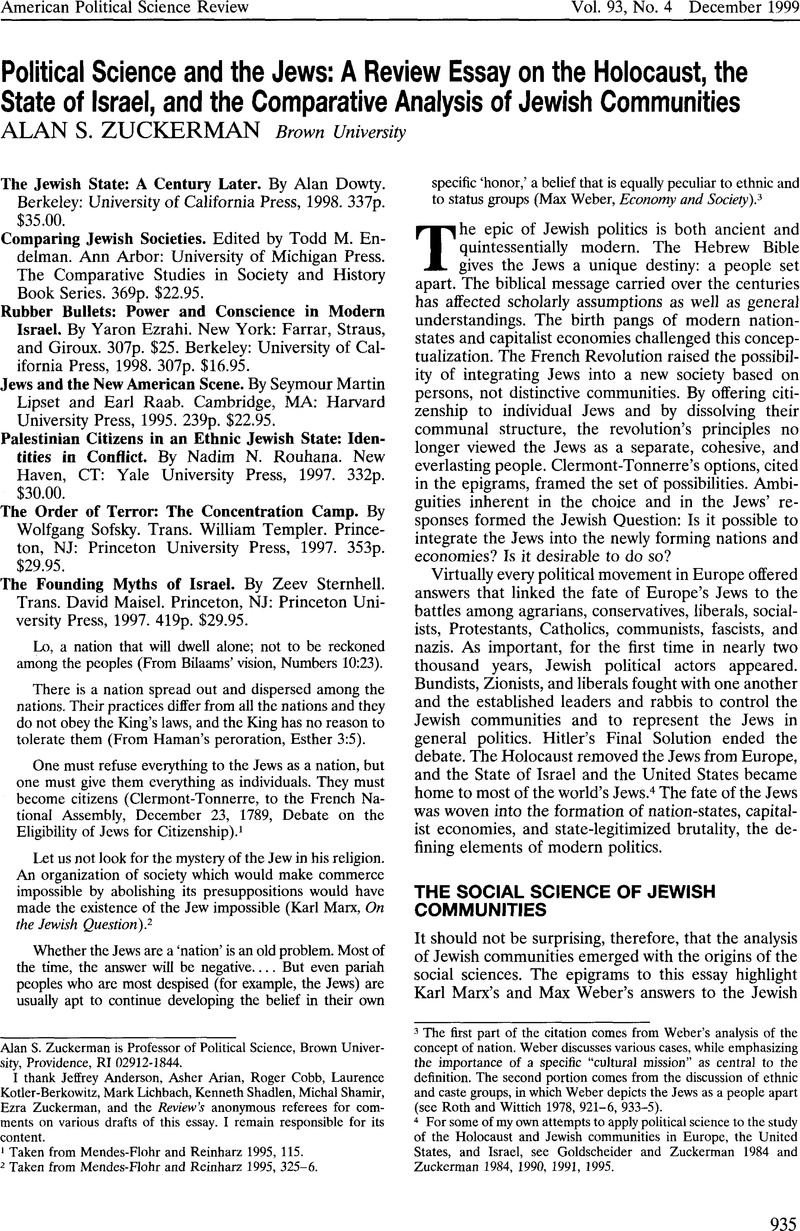Crossref Citations
This article has been cited by the following publications. This list is generated based on data provided by Crossref.
Kotler-Berkowitz, Laurence A.
2001.
Ethnicity and Politics: Cohesion, Division and British Jews.
Political Studies,
Vol. 49,
Issue. 4,
p.
648.
Goldscheider, Calvin
2002.
The marshall sklare memorial lecture.
Contemporary Jewry,
Vol. 23,
Issue. 1,
p.
196.
Kotler-Berkowitz, Laurence
2002.
Social Cleavages and Political Divisions: A Comparative Analysis of British, American and South African Jews in the 1990s.
Journal of Modern Jewish Studies,
Vol. 1,
Issue. 2,
p.
204.
Wald, Kenneth D.
2015.
The Choosing People: Interpreting the Puzzling Politics of American Jewry.
Politics and Religion,
Vol. 8,
Issue. 1,
p.
4.
Wald, Kenneth D.
2019.
The Foundations of American Jewish Liberalism.
Forster, A. Diana
Sheskin, Ira M.
and
Wald, Kenneth D.
2020.
The Political Consequences of Trauma: Holocaust Exposure and Emotional Attachment to Israel Among American Jews.
Contemporary Jewry,
Vol. 40,
Issue. 2,
p.
209.
Kotler-Berkowitz, Laurence
and
Sheskin, Ira M.
2022.
Social Class and Social Cohesion among American Jews.
Review of Religious Research,
Vol. 64,
Issue. 3,
p.
497.
Tabaar, Mohammad Ayatollahi
Huang, Reyko
Chandra, Kanchan
Finkel, Evgeny
Nielsen, Richard A
Revkin, Mara Redlich
Vogt, Manuel
and
Wood, Elisabeth Jean
2023.
How Religious Are “Religious” Conflicts?.
International Studies Review,
Vol. 25,
Issue. 3,




Comments
No Comments have been published for this article.